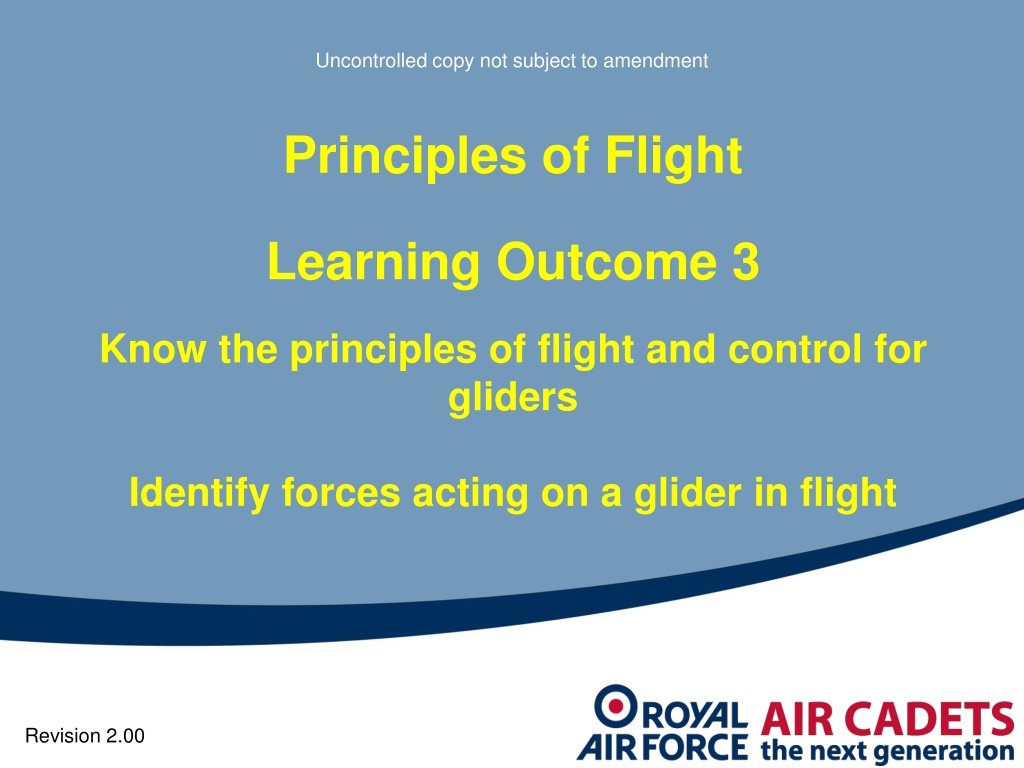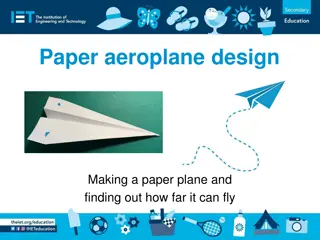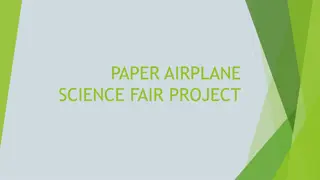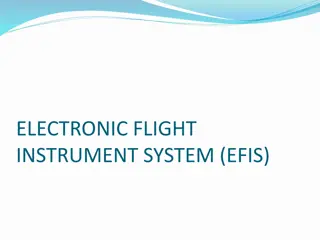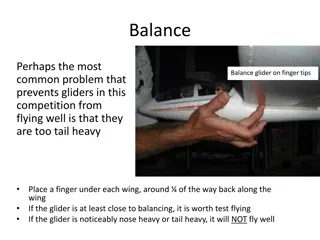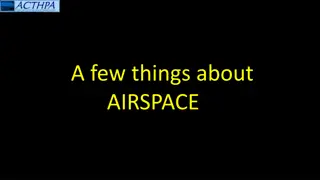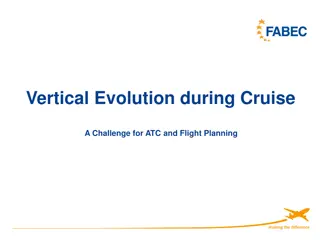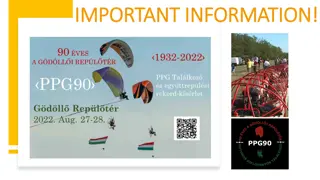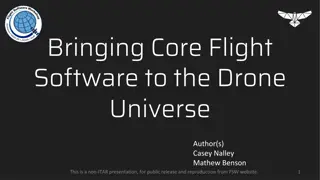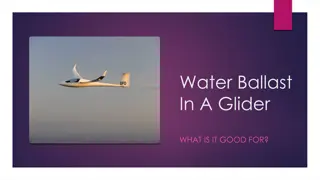Understanding Principles of Flight for Gliders
Explore the fundamental principles of flight and control for gliders, including the identification of forces acting on a glider in flight. Learn about lift, critical angle of attack, stalling, and the impact of various factors on gliding performance.
Download Presentation

Please find below an Image/Link to download the presentation.
The content on the website is provided AS IS for your information and personal use only. It may not be sold, licensed, or shared on other websites without obtaining consent from the author. Download presentation by click this link. If you encounter any issues during the download, it is possible that the publisher has removed the file from their server.
E N D
Presentation Transcript
Uncontrolled copy not subject to amendment Principles of Flight Learning Outcome 3 Know the principles of flight and control for gliders Identify forces acting on a glider in flight Revision 2.00
Principles of Flight Revision
1. What happens to lift when a wing is stalled? a. Lift increases as the angle of attack decreases b. Lift decreases as the angle of attack increases c. Lift is greatly reduced d. Lift remains unchanged
2. The critical angle of attack is generally about .... a. 5o b. 15o c. 25o d. 35o
3. Which of the following will NOT reduce stalling speed? a. Extra weight b. Larger wing area c. Flaps lowered d. Flaps raised
Gliding Objectives: List and describe the forces acting on a glider during balanced flight State the effect of wind on the distance travelled over the ground Explain the effects of airbrakes on glide performance Understand the gliding angle (angle of attack)
Are these forces in balance for straight and level flight? What are the Forces acting on a Powered Aircraft? Lift Thrust Drag Weight
What would happen if we had NO thrust? Lift Thrust Drag Weight What do we need to do to overcome drag?
Lift Drag Weight
Gliding speed The car can coast down the hill with no engine How? GRAVITY Can we use gravity to fly a glider?
Gliding speed A glider uses gravity to descend The airflow over the wing produces lift How do we control the speed?
Lift Speed If the nose is raised, what will happen? Lift and speed reduce The rate of descent also reduces
Lift Speed If the nose is lowered, what will happen? Lift and speed increase The rate of descent also increases
Remember: If you fly too slowly lift will be lost and the glider will stall If you fly too quickly the rate of descent will be high
How far will a glider travel? The flatter the gliding angle, the further the distance over the ground The steeper the gliding angle, the shorter the distance over the ground What is the BEST angle to fly at?
Lift/Drag ratio CL CD 0
The Pilots Notes will give information on gliding speeds For example: A Viking glider s angle is about 1 in 35 Therefore, from a height of 3,280 ft (1 kilometre), in still air, it will travel about 35 kilometres
The effect of wind What will happen when flying at the same airspeed and angle of attack?
What will happen when flying at the same airspeed and angle of attack? Still air Headwind Tailwind
The effect of the airbrake When the airbrake is opened, what happens to the drag? The drag increases What must be done to maintain airspeed? Lower the nose
Airbrake in Airbrake out = steeper descent + shorter ground distance
1. Name the forces acting on a glider in normal flight a. Force, weight and lift b. Drag, weight and thrust c. Drag, weight and lift d. Drag, thrust and lift
2. How does a glider pilot Increase airspeed? a. Operate the airbrakes b. Lower the nose by pushing the stick forward c. Raise the nose by pulling the stick back d. Lower the nose by pulling the stick back
3. A Viking glider descends from 1640 ft (0.5 km). How far over the ground does it travel (in still air)? a. 17.5 km b. 35 km c. 70 km d. 8.75 km
4. When flying into a headwind, the distance covered over the ground will ..... a. Be the same b. Decrease c. Increase d. Take you to Burger King
